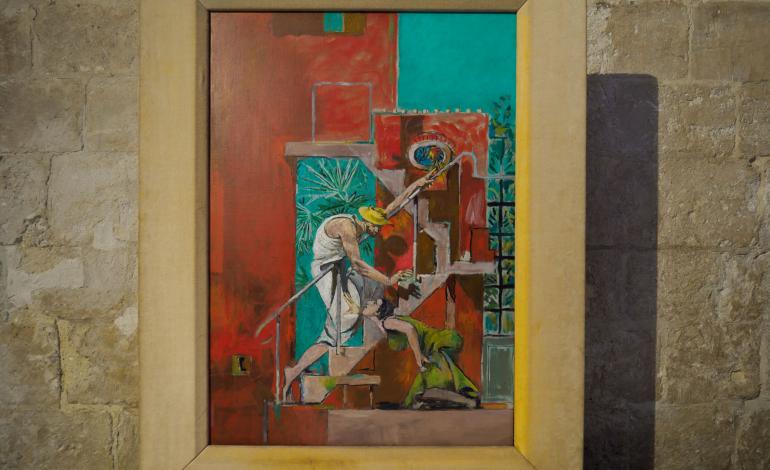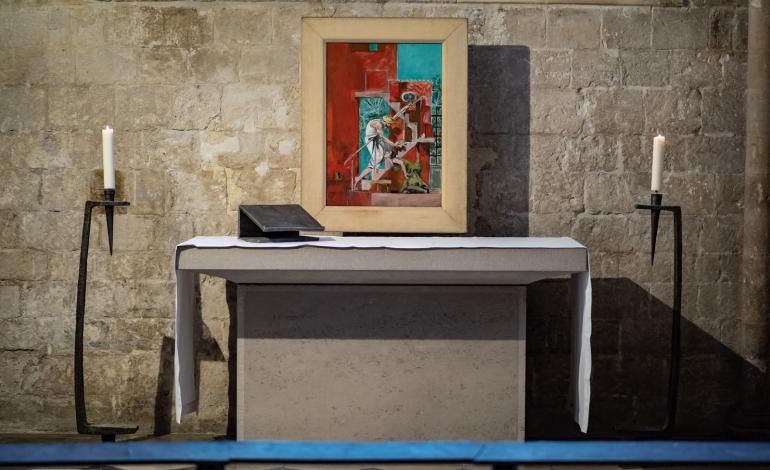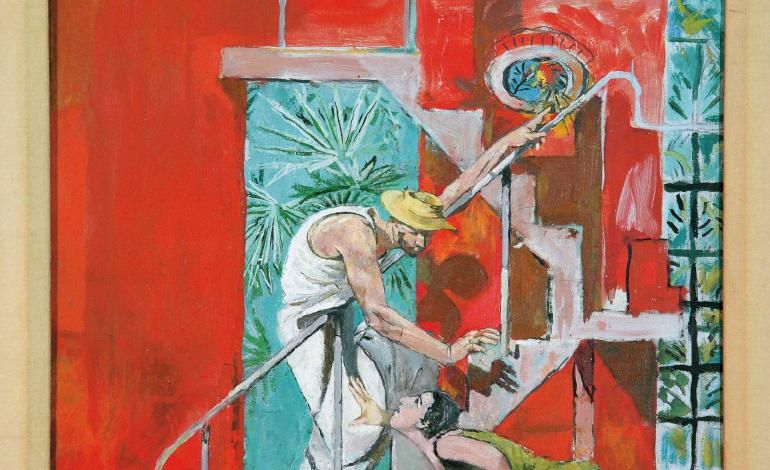Noli Me Tangere (Touch me not) is the title of a painting by Graham Sutherland (1903-1980) displayed on the altar of the Mary Magdalene Chapel at the south-eastern corner of the Cathedral.
This painting is important, not just as a significant piece of modern art, but because it portrays the first realisation by a mortal that Christ had indeed risen from the dead.
The painting, completed in 1961, illustrates the moment described in St John’s gospel, chapter 20, verses 14 to 17. On the first day of the week after Jesus’ crucifixion, Mary Magdalene was standing outside his empty tomb weeping when she saw Jesus standing there. Mistaking Jesus for the gardener, she asked him where they had put the body, and it was only when Jesus spoke that she realised who he was. Jesus’ reply was ‘don’t cling to me, because I have not yet gone up to the Father’. In Latin, the first part of this reply became ‘Noli me tangere’ and this is the moment Sutherland has illustrated.
Sutherland actually created two versions of this painting. The other version is now in Chichester’s Pallant House Gallery, but both use the same bright colours. This is partly because Sutherland was living in the south of France where the light is naturally bright, but also because the finished work had to be visible from the baptistry, some distance away, as well as from close up.
Jesus’ hat (a motif used by Rembrandt in his painting of the same subject), helps explain why Mary thought he was the gardener. Mary reaches out to touch Jesus, but he is shown ascending a staircase, indicating that he is already on the way to heaven.
Controversial in its time, in 1963 Sutherland's painting was defaced by a woman using a ball point pen, causing a small amount of damage.
Symbolism
Sutherland's painting is full of symbolism.
It is asymmetrical, allowing the perpendicular meeting of the diagonal handrail and second level of the staircase to form a transverse cross. Jesus’ figure stands upon this construction, his body creating a strong diagonal line pointing upwards, but his gaze and gentle, yet firm, gesture downward emphasising the tension between the two figures.
The form of Jesus’ raised arm is reminiscent of Michelangelo’s The Creation of Adam; through the most delicate part of the human body, Christ is shown to reconnect us to the God we have betrayed. The angle between the ascending staircase and the vertical line of the doorway meet to form a triangle, with the figure of Jesus contained inside, and in this way, Sutherland depicts the Holy Trinity at the heart of his work.
Beyond the courtyard is the garden; the garden where Jesus’ body had been laid in the tomb, but also perhaps a glimpse of paradise. Mary is being left behind, and the precarious joy of the moment is already beginning to slip from her hands.
There are some teasingly uncertain elements within this picture:
- An exotic bird perches in an aperture which looks disturbingly like a heavenly eye gazing down on the scene - are we not the only spectators of this drama?
- A keyhole appears at the foot of the stairs. Something has been locked - or was it unlocked?
- The man’s destination is also uncertain. Do the steps lead to a door?
- And beside the woman at the foot of the stairs is a small stool. Does she possess the means to reach the man if she chooses?
- And then there is the man’s shadow which, intriguingly, is not wearing a hat. Like all shadows it is clearly part of him, but is it yet another character in the drama?


